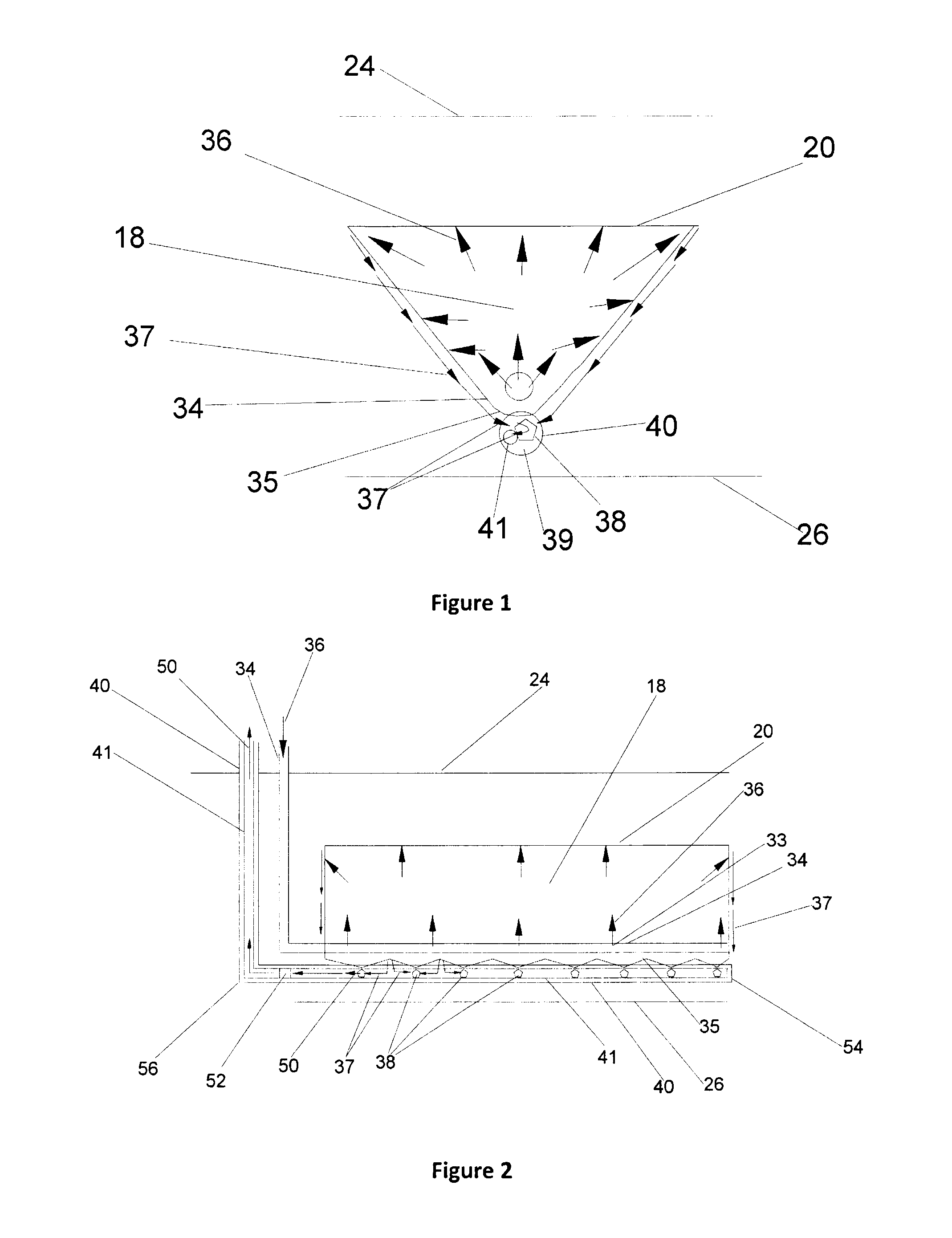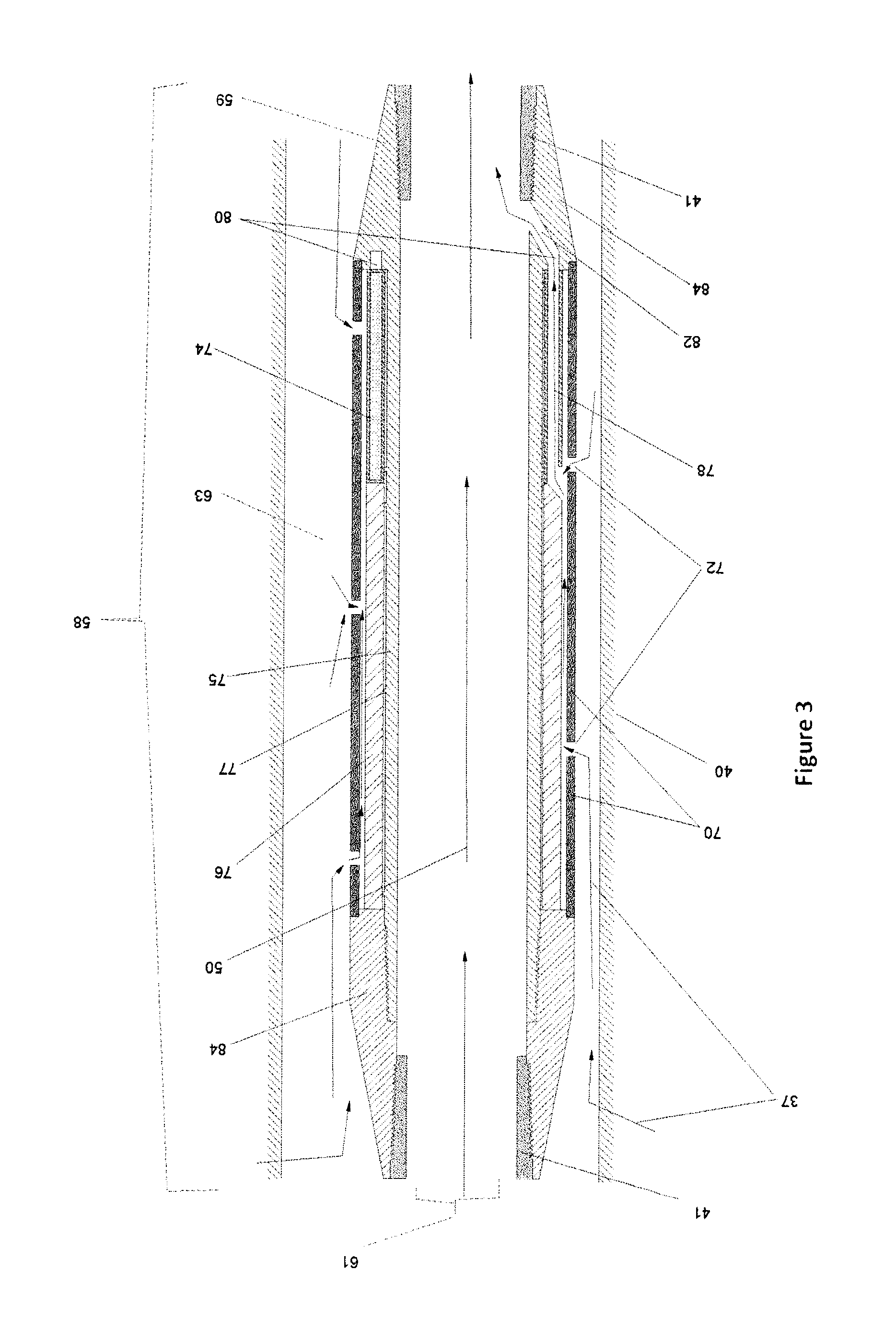Inflow control valve for controlling the flow of fluids into a generally horizontal production well and method of using the same
a technology of inflow control valve and production well, which is applied in the field of in situ hydrocarbon extraction, can solve the problems of unsatisfactory gas loss into the production well, unsatisfactory recompression and re-injection, and the loss of gas into the production well is undesirable, and achieves the effect of reliably opening and closing
- Summary
- Abstract
- Description
- Claims
- Application Information
AI Technical Summary
Benefits of technology
Problems solved by technology
Method used
Image
Examples
Embodiment Construction
[0052]In this description the following terms shall be understood to have the following meanings. The terms vertical and horizontal are meant to indicate generally vertical or horizontal. For example, it is common to refer to a horizontal production well that may not in practice be straight or perfectly horizontal, but is generally more horizontal than vertical. The same applies to the term vertical, which in this case means more vertical than horizontal. The term “riser” means that portion of the wellbore or production tubing that extends from the underground reservoir to the surface to transport the production fluids. Many well configurations and drill patterns can be used and the precise shape and slope of production wells and risers can vary considerably without departing from the scope of the present invention. In this specification the term fluids shall comprehend both liquids and gases and combinations thereof. In some cases the fluids will also contain mixtures of two differ...
PUM
 Login to View More
Login to View More Abstract
Description
Claims
Application Information
 Login to View More
Login to View More - R&D
- Intellectual Property
- Life Sciences
- Materials
- Tech Scout
- Unparalleled Data Quality
- Higher Quality Content
- 60% Fewer Hallucinations
Browse by: Latest US Patents, China's latest patents, Technical Efficacy Thesaurus, Application Domain, Technology Topic, Popular Technical Reports.
© 2025 PatSnap. All rights reserved.Legal|Privacy policy|Modern Slavery Act Transparency Statement|Sitemap|About US| Contact US: help@patsnap.com



